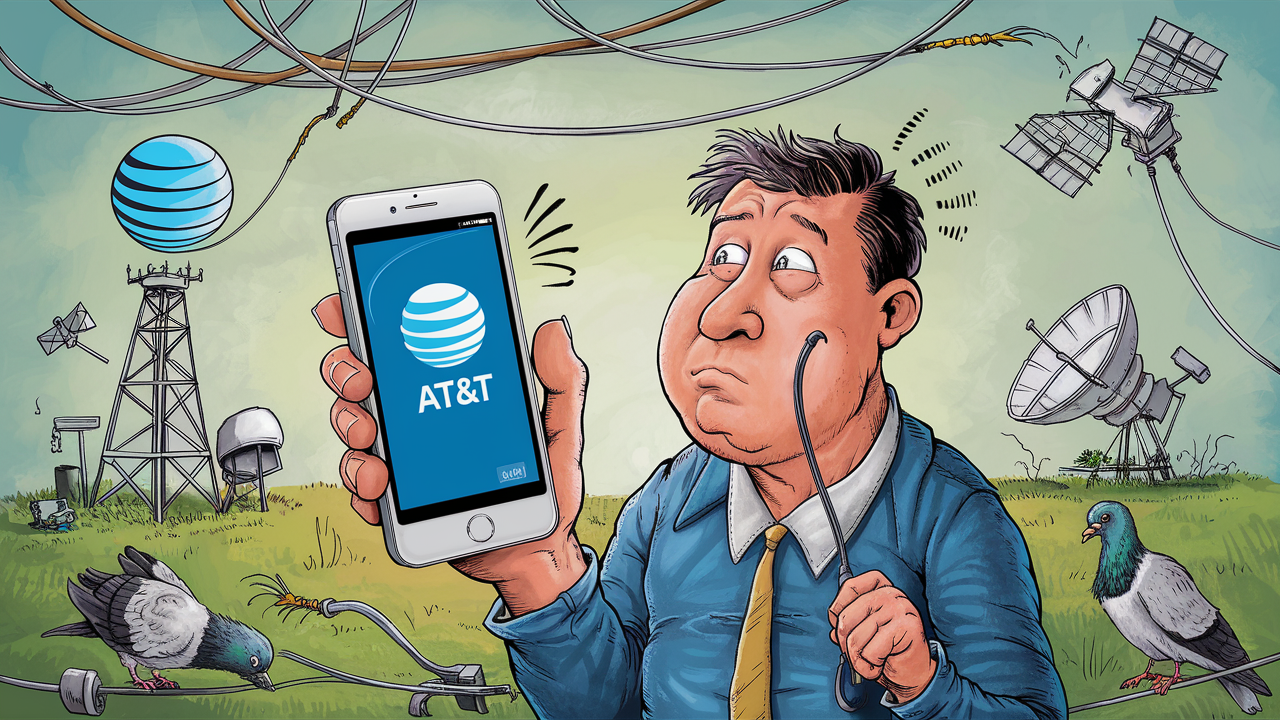Why is AT&T signal so bad lately?

Why is AT&T signal so bad lately
AT&T has been among the largest and most recognizable wireless service providers in the United States for quite some time. However, a lot of AT&T users have been reporting that they are experiencing a decline in the quality of their service of late with a lot of call drops, slow or no internet connection, and call quality that seems to have deteriorated even in areas that used to have good network reception. So what's going on? Why does it seem like AT&T's service is so horrible lately? Here are some of the possible reasons:
Increased Network Congestion
Another factor that could be causing AT&T’s reliability to decrease could just be the fact that there are now more people using their network. Since the advancement of smartphones in the last few years and their usage of data, traffic on the networks has skyrocketed. Many customers are streaming HD video, uploading photos, and using data-hungry apps while more customers want to use high-speed data all the time. This overloads the limited capabilities of cellular networks such as AT&T’s.
As their current customers generate more and more data usage requests and AT&T continuously gains new customers, there is no way their network can handle it all. This means that congestion will offer users slower speeds, poor performance, and even loss of connection when the network is congested in that area. It also shows that AT&T Internet has been trying to address the issues of the inefficient infrastructure to accommodate customers with heavy usage but has not been able to meet the growing utilization rates.
Preference towards 5G over 4G/LTE
Similarly to congestion questions, AT&T has likely focused on the deployment of its next-gen 5G network at the expense of older 4G LTE. This emphasis on new technology makes legacy service worsen. The majority of customers are, however, still using AT&T’s 4G due to the limited availability of 5G in metro regions. The company has well-advertised 5G connectivity in commercials and has invested a lot in laying the foundation. Still, the existing big 4G LTE networks, which cover most of the connections today, appear to be receiving less extensive developments.
When AT&T is directing investment capital towards 5G at the same time as it fails to address the necessary upgrades in enhancing 4G resiliency, customers accessing 4G are affected by additional traffic and unreliable signals since usage continues to rise. The company is piling after the more advanced technology while compromising the quality of the older networks that still bear most of the traffic.
Integration Struggles After Mergers
Over the past decade, AT&T has also experienced significant merger and acquisition activities that saw it absorb BellSouth, DirecTV, and Time Warner, among others. Merging various networks, systems, and technologies from different companies creates all sorts of complications. Every pairing entails the migration of customers and their networks, integration of disparate systems, improvement of the compatibility of equipment throughout the infrastructures, and integration of operations across different regional operations.
These multifaceted integration efforts without question draw AT&T away from fine-tuning service quality daily and present integration issues that translate into worse reliability or coverage for the customer. Some of that may have been the cause of AT&T's mobility problems in recent years – they have more than enough on their plate trying to integrate various companies. The integration of systems that were developed independently results in technical problems that interfere with connectivity. The good news is that once the integration is complete, the consolidated operations can have the potential to enhance the service. However, in the meantime, customers are the ones who suffer the consequences.
Increased Extreme Weather Events
It is also important to note that the AT&T networks might be more susceptible to such extreme weather occurrences as could be caused by general global warming. It ranges from storms and floods to heat waves and wildfires, and they are becoming more frequent and severe annually. These dangerous environmental events tend to affect structures and essential services such as cell tower equipment and fiber optic cabling required for the transmission of mobile data. A recent tornado outbreak in the central U.S., for instance, caused catastrophic losses and rendered cell connectivity unreliable due to the destruction of towers.
With climate change coming into force, it is more frequent to have weather disasters, and hence, it will be challenging for AT&T to ensure business continuity while the infrastructure is under attack by storms or floods. Again, in the winter storms in Texas in 2021, the massive power outages caused most cell networks to completely shut down. Crisis response consumes resources that could otherwise be used to make proactive enhancements. In actuality, climate change affects networks due to damages caused by extreme weather conditions, and, therefore, customers may not receive reliable connectivity.
Therefore, the aggressive network traffic by applications and consumer devices, preferring the evolution to 5G instead of fortifying 4G networks that are still active, technical issues caused by mergers and acquisitions, and increasing severity of weather conditions might be all the factors that recently left many AT&T subscribers unsatisfied with the quality of the connection. The company still has a lot to learn in terms of enhancing infrastructure capacities, improving integration processes, and adapting to a shifting environment in a bid to offer seamless and quality connectivity across the country in the coming years. Well, to date, weak signals and poor performance are what the subscribers get, and this does not make them happy.
Upgrade to faster, more reliable AT&T Fiber Internet today! Call us at +1 844-905-5002 and get connected with speeds that keep you ahead.





